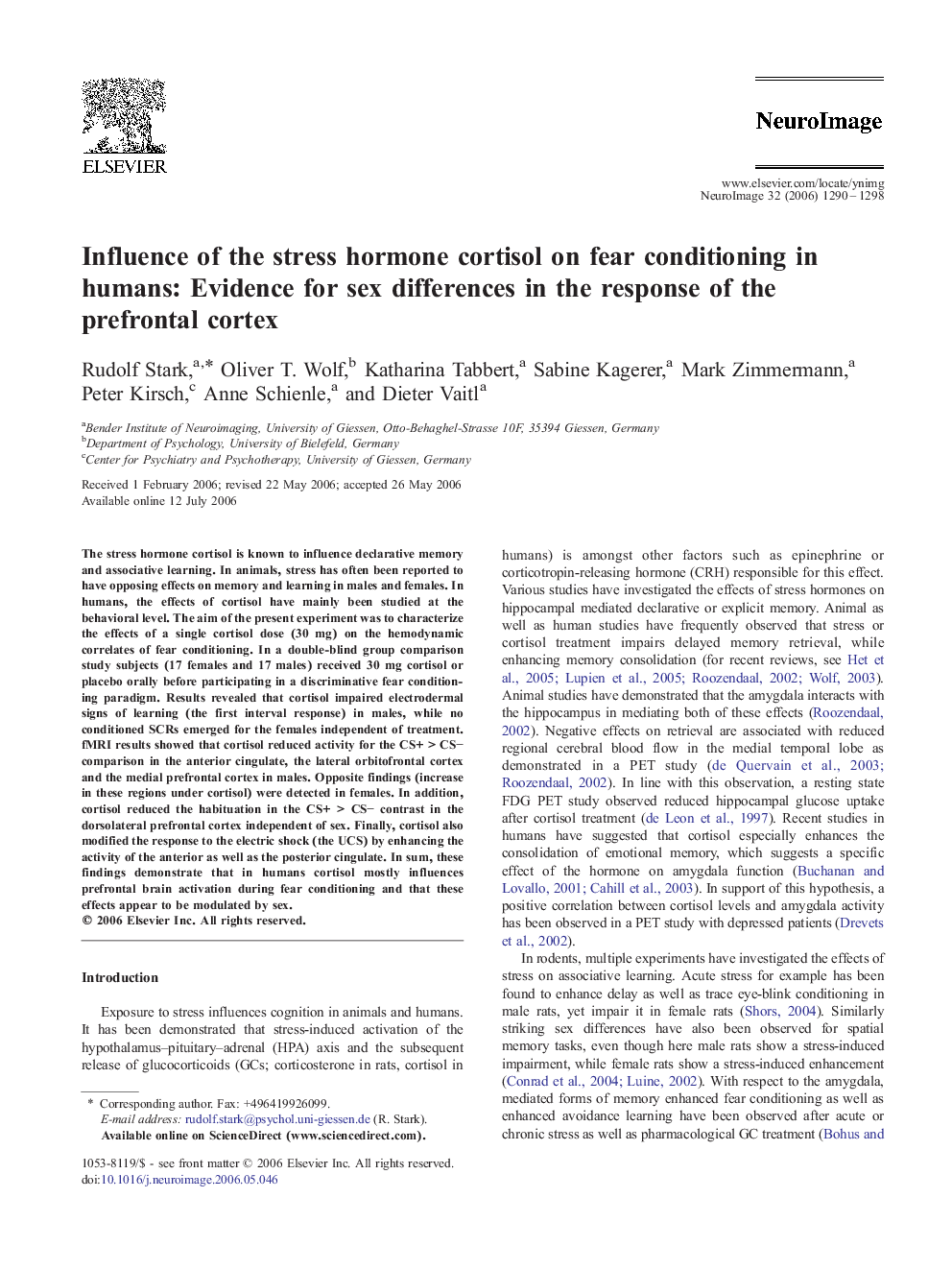| کد مقاله | کد نشریه | سال انتشار | مقاله انگلیسی | نسخه تمام متن |
|---|---|---|---|---|
| 3074560 | 1188880 | 2006 | 9 صفحه PDF | دانلود رایگان |

The stress hormone cortisol is known to influence declarative memory and associative learning. In animals, stress has often been reported to have opposing effects on memory and learning in males and females. In humans, the effects of cortisol have mainly been studied at the behavioral level. The aim of the present experiment was to characterize the effects of a single cortisol dose (30 mg) on the hemodynamic correlates of fear conditioning. In a double-blind group comparison study subjects (17 females and 17 males) received 30 mg cortisol or placebo orally before participating in a discriminative fear conditioning paradigm. Results revealed that cortisol impaired electrodermal signs of learning (the first interval response) in males, while no conditioned SCRs emerged for the females independent of treatment. fMRI results showed that cortisol reduced activity for the CS+ > CS− comparison in the anterior cingulate, the lateral orbitofrontal cortex and the medial prefrontal cortex in males. Opposite findings (increase in these regions under cortisol) were detected in females. In addition, cortisol reduced the habituation in the CS+ > CS− contrast in the dorsolateral prefrontal cortex independent of sex. Finally, cortisol also modified the response to the electric shock (the UCS) by enhancing the activity of the anterior as well as the posterior cingulate. In sum, these findings demonstrate that in humans cortisol mostly influences prefrontal brain activation during fear conditioning and that these effects appear to be modulated by sex.
Journal: NeuroImage - Volume 32, Issue 3, September 2006, Pages 1290–1298